BATMAN (1989)
Tim Burton steps up to bat...
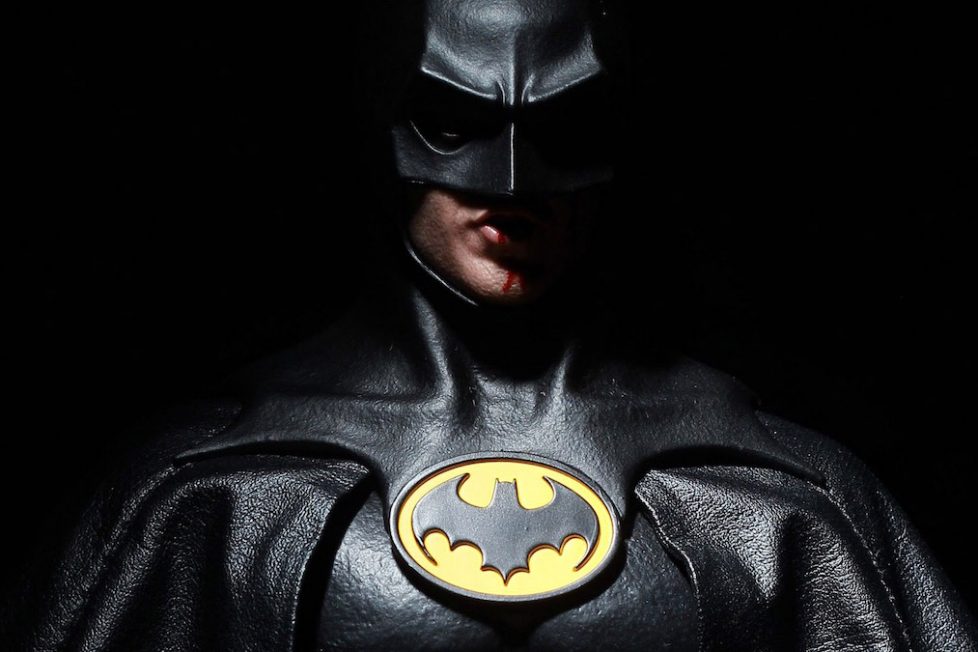

One couldn’t escape the Batman symbol in the summer of 1989. It alone became an influential way to create brand awareness with a simple but eye-catching design. Cruelly, I wasn’t old enough to see Tim Burton’s Batman during its theatrical run that summer, so my first experience of it was later on video, but I remember being underwhelmed. It played as very serious and slow to me, with peculiar moments and lots of talking. I hadn’t been raised on the 1960s Batman television series, so my reaction wasn’t a negative response to how this film destroyed preconceptions of what a live-action Batman should be. But I certainly expected something more accessible and fun, as my benchmark for superheroes was Superman II (1980).
I’ve watched Batman many times since its release, and started to warm to it following the even better Batman Returns (1992). While I much preferred Burton’s bizarre sequel, it led me to appreciate the character and how Burton took unprecedented chances. We’re currently onto the third iteration of the Caped Crusader at the cinema — following Joel Schumacher’s tasteless 1990s sequels, Christopher Nolan’s “realistic reboot” from the mid-2000s, and Zack Snyder’s brawnier spin in Batman v Superman: Dawn of Justice (2016), so 1989’s Batman now feels as classic as Coca-Cola.
Let’s take a look back at the second highest-grossing movie of ’89, which was only pipped to the post by Indiana Jones and the Last Crusade.
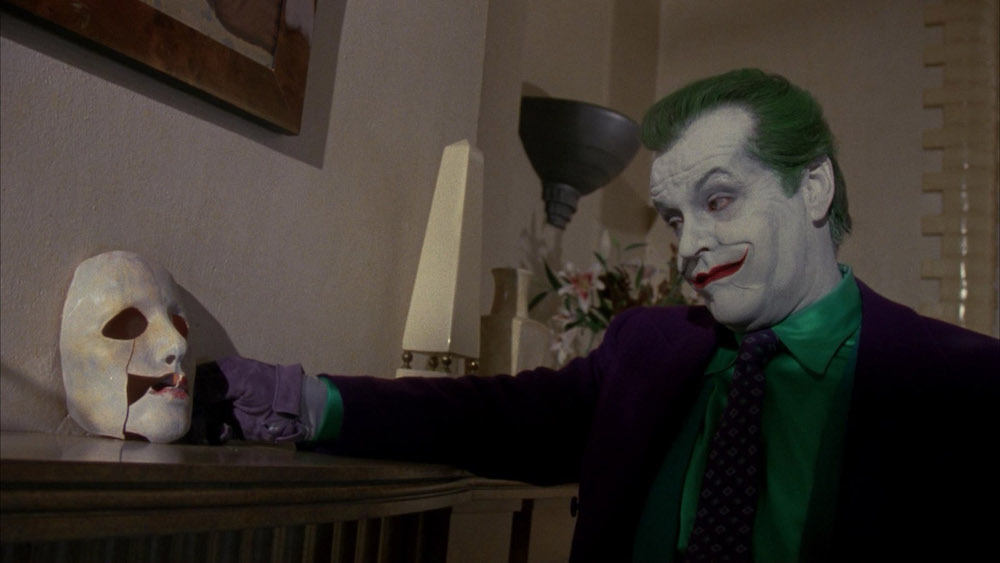
Jack Nicholson was the big commercial draw for Batman, as the Hollywood legend naturally got top-billing over Michael Keaton. He clearly had a ball with the scene-chewing role of Jack Napier/The Joker. It was a brilliant piece of casting (analogous to Richard Donner hiring Marlon Brando for Superman: The Movie, only in a key role), and Nicholson’s clown make-up, purple costumes, and giggly performance evoked Caesar Romero from the aforementioned TV series… only with a more psychotic twist. Nicholson seemed to be drawing on his turns in One Flew Over the Cuckoo’s Nest (1975) and The Shining (1981).
Of course, post-The Dark Knight (2008), Nicholson’s take on The Joker has come to feel a bit toothless and ‘spooky uncle’, thanks to Heath Ledger’s more psychologically complex twist on the anarchic Clown Prince of Crime. But I’m able to cut Nicholson some slack because his Joker’s still a ghoulish and memorable character for the time. His Joker represented a huge leap forward when you consider the most notable ’80s supervillain had been Gene Hackman’s loquacious Lex Luthor. DC Comics may have already pushed Batman into even darker territory on the page, with acclaimed stories that inspired Warner Bros. to make this big-screen adaptation, but it would take audiences almost 20 years to fully accept a comic book movie tackling weighty issues like terrorism, anarchy, and state surveillance.
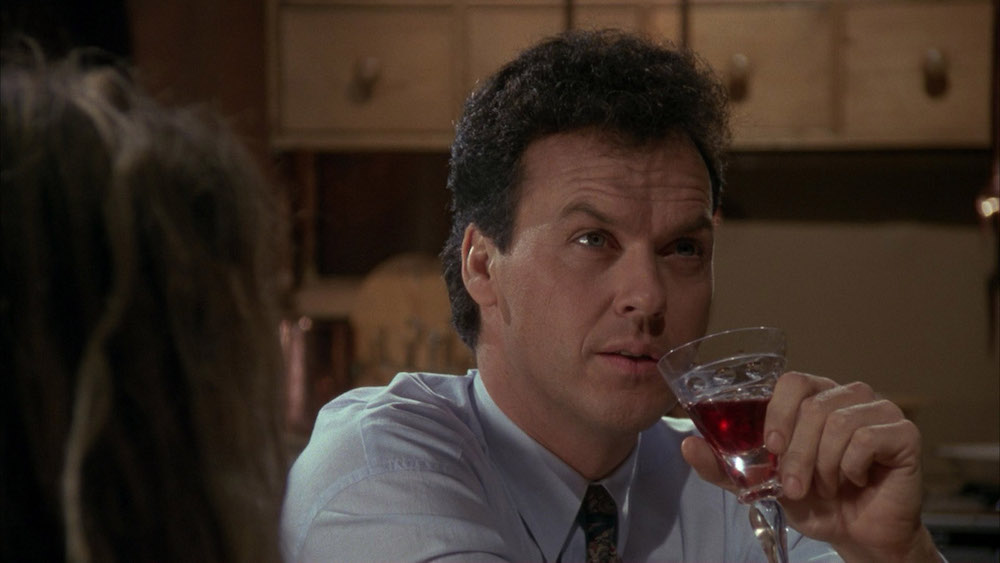
What surprised me about watching Batman for the first time in 15 years, is that I was more interested in Michael Keaton as Bruce Wayne this time. Nicholson dominated the conversation when Batman premiered, meaning Keaton was overshadowed by his more famous co-star’s flamboyant performance. There was initially harsh reaction to Keaton being cast (as he was then known for comedic roles in Mr. Mom and Beetlejuice), but while his brooding Batman silenced critics, it’s fair to say both of Burton’s films pushed their eponymous hero aside in favour of exploring the avant-garde villains.
However, it’s great that time’s been kind to Keaton’s nuanced performance as a tortured loner. I notice far more subtlety and poignant moments all these years later. Bruce’s tragic background isn’t addressed for a long time, so for most of the film you’re slightly disturbed by the conduct of a billionaire who holds expensive soirées in his mansion so he can snoop on VIP guests using cameras hidden behind one-way mirrors.
Keaton also exudes the vibe of a socially awkward gentleman who doesn’t interact much with the everyday world, instead preferring his own company indoors, fumbling through “normal life” with the help of an elderly English butler (Michael Gough’s Alfred). In stark contrast to the enviable lifestyle of the “playboy billionaire” Bruce Wayne we’ve since become more familiar with (especially through Christian Bale’s interpretation), Keaton’s Bruce is more private and less extravagant. He doesn’t hide in plain sight as the life and soul of the city’s social scene, he just hides. This Bruce Wayne’s such a recluse that his tragic family history isn’t public knowledge, whereas in later versions it marked a spiritual turning point for Gotham City as a whole.
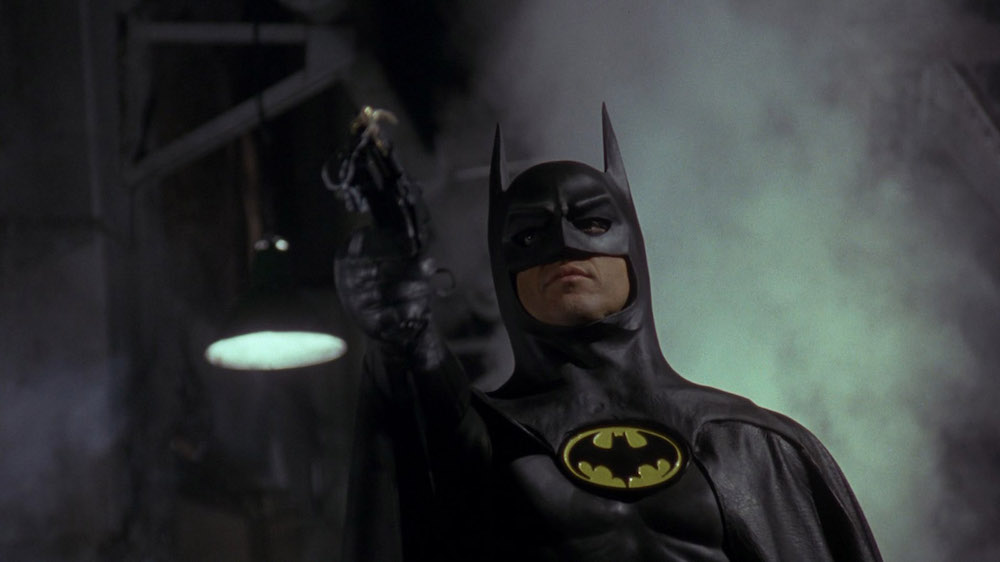
You also feel like Bruce’s romance with photojournalist Vicky Vale (Kim Basinger) is his first romantic liaison in years. It actually wouldn’t surprise me if she’s the first woman he’s ever slept with, because their post-coital scene in bed has him wearing pyjamas. Did they just cuddle all night? In a fascinating moment I’ve never considered before, Bruce is also keen to strap on gravity boots and hang upside down like a bat the next morning. I guess what I’m saying is that Michael Keaton’s Bruce Wayne sometimes comes across as stranger than The Joker. He’s a psychologically damaged man who adopted a crime-fighting alter-ego for unspecified reasons. We’re treated to the now hackneyed flashback sequence of young Master Wayne present during his own parent’s murders, but there’s nothing to set up why he then waited a couple of decades before deciding to dress up as a bat to go catch criminals. It would take until Batman Begins (2005) for movie audiences to really get a handle on his bizarre thought process.
The aforementioned flashbacks bring me to one of Batman’s most controversial changes to canon, as it’s The Joker who shot the Wayne’s dead in a back alley, decades ago when he was upstart gangster Jack Napier. The Batman alter-ego was thus set in motion by his eventual foe, who in turn was only transformed into “The Joker” after Batman allowed him to fall into a green vat of toxic chemicals. Truthfully, as this was my first introduction to the Batman mythos, I was surprised to learn this wasn’t the case in the comic books…
As Batman Begins faithfully informed us years later, the Wayne’s murderer was just a low-level thief. But I completely understand why they made this change in ‘89, partly inspired by the “Red Hood” origin story for The Joker (where Batman does create his enemy, but not vice versa). There’s a cool synergy to it. It also gives the third act a fun “twist” when The Joker is told of their connection and makes the antagonism between Batman and The Joker more personal. Without it, the movie loses a lot of emotional heft that would’ve rendered the climactic sequences a bit inert. It never quite worked for me that The Joker falls in love with Vicky halfway through the movie, and on some level she just “a girl” for the boys to fight over.
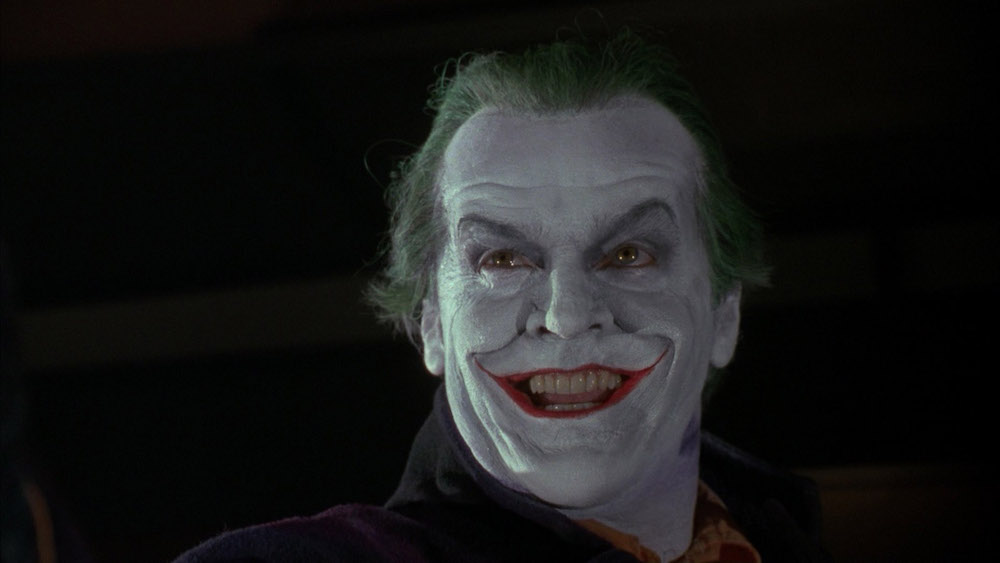
On a technical level, Batman holds up reasonably well as a summer blockbuster created before the era of digital F/X. This came out the same year as James Cameron’s The Abyss, but two years before Terminator 2: Judgment Day (1991), and three years before the game-changing Jurassic Park (1993). It’s perhaps the last great “pre-digital blockbuster”.
The first glimpse of Batman is a high overhead shot onto a building’s ledge, where he’s a poorly animated drawing, and it looks awful. The make-up for The Joker’s grin still fascinates me, though. I’m never sure if Nicholson has an appliance in his mouth to create a permanent grin, or if the look was achieved using latex around his lips and cheeks. Maybe it’s both. Thanks to high-definition, a number of wires can be seen dropping or pulling Batman into a few scenes now, which I’m surprised haven’t been digitally erased.
But the biggest howler is the otherwise fantastic moment when Batman fights a sword-wielding goon because a stunt double performs the entire scene, including static shots Keaton could easily have done. It’s now excruciatingly obvious a “cowled imposter” is suddenly playing Batman for a few minutes. Oh, and while the extensive use of miniatures and background matte paintings is charming and very nostalgic for kids of the ‘80s, there are many shots where it’s painfully obvious it’s a toy Batwing with a plastic Batman sat motionless in the cockpit, like something out of Thunderbirds.
Other areas of the movie have aged very well. The production design of Gotham City is still my favourite of the many variations we’ve seen, as it’s a fantastic blend of architectural styles. You can’t actually tell when Batman takes place, because everyone dresses like they’re in period gangster movie (so many fedora hats!), the cars look like they’re from the 1970s, and yet there’s evidence of technology that places it in the mid-’80s. It’s clearly an alternate universe. I also love the Batman costume. It’s so rubbery and heavy looking, although the weight clearly limited what could be done physically. There’s no hope of Batman being as lithe and nimble as his illustrated counterpart, alas. The sleek Batmobile and Batwing are also iconic designs that have become my abiding image of those vehicles, although I know older generations can’t shake Adam West’s wheels from their mind.
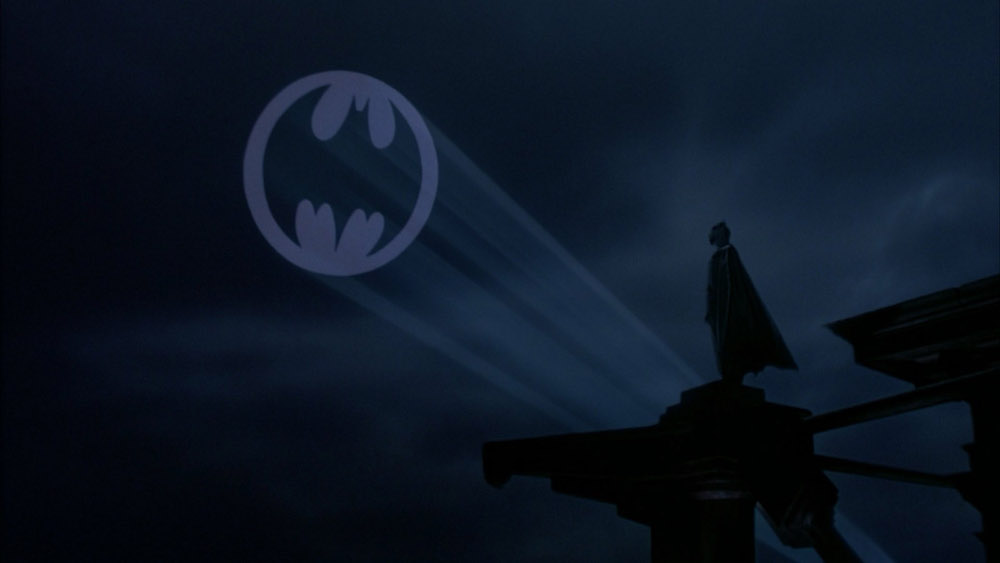
Batman was released in the US on 19 June 1989, having cost Warner Bros. $48 million ($18 million more than they’d budgeted for). The marketing blitzkrieg worked tremendously well, helping the picture gross $411 million at the worldwide box office. It become the fifth high-grossing movie of all time. Three sequels followed in 1992, 1995, and 1997 (but only the first saw Tim Burton and Michael Keaton return), together with the well respected Batman: The Animated Series (1992–95).
Despite a grim tone and some quite frightening moments, Batman was a toymaker’s dream. The Batman symbol appeared on practically anything with a price tag, and despite the fact many kids couldn’t watch the movie in cinemas (Batman earned the BBFC’s first 12-certificate rating in the UK), the studio made a huge profit. It’s a puzzling conundrum that either proves the marketability of superheroes themselves, or perhaps the bulk of sales happened nearer Christmas when the movie came out on video? Whatever the reason, Batman’s viability as a movie hero was made in 1989, and despite having some bad sequels to its name, the Caped Crusader keeps proving his adaptability.
director: Tim Burton
writer: Sam Hamm & Warren Skaaren (story by Sam Hamm, based on characters appearing in magazines published by DC Comics and ‘Batman’ characters by Bob Kane & Bill Finger).
starring: Jack Nicholson, Michael Keaton, Kim Basinger, Robert Wuhl, Pat Hingle, Billy Dee Williams, Michael Gough & Jack Palance.
